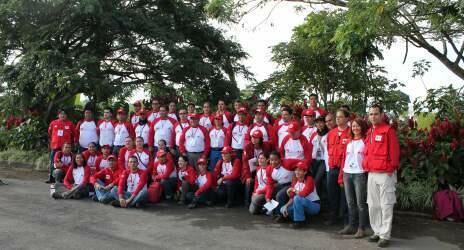
During the Colombian Red Cross Relief´s Directors National Meeting “Together for a more Human and Efficient Red Cross”, the Colombian Red Cross’ senior officials, relief directors from 30 out of the 32 branches in the country, the Director of the National Unit for DRR, Dr. Carlos Iván Márquez Pérez, and other partners gathered in Bogota on Sept 19-21. This national meeting provided a platform for identifying the dynamics that should be improved in relief and humanitarian assistance operations. They highlighted the need to strengthen understanding and use of local impact tools adapted to the new legal framework of the National Disaster Risk Management System established by Law 1523 of 2012. Likewise, the key role that the Colombian Red Cross branches play at departmental, municipal and local level to support the authorities in the preparation for common legal problems that could arise during a disaster response at local level was emphasized. Based on experience developed at national level with the implementation of the IDRL Guidelines in Colombia, the Colombian Red Cross Humanitarian Diplomacy Program elaborated a preliminary action plan for 2013 in order to strengthen capabilities at the local level, along with the 32 branches’ relief teams.
Likewise, in order to increase the number of accredited and trained personnel for international operations during an emergency, the Colombian Red Cross facilitated a module relevant to the IDRL Guidelines within a training session for “Regional Intervention Teams” (RITs), held on Sep. 22-29 in Colombia. The RITs constitute a regional support system and are composed of National Societies volunteers with transversal knowledge and experience in disaster response in their home countries. The participants had the opportunity to analyze and put in practice the IDRL Guidelines’ content within a hypothetical disaster scenario, which allowed them to debate and determine the best actions to be taken with regard to this tool.
“The participants identified a clear need to gain a general understanding regarding the applicable regulations and international instruments in case of disaster for use in real disaster response situations”, noted Roxana Trigo, of the Colombian Red Cross’ Department of International Affairs and Humanitarian Diplomacy.
From this exercise, it was found that there are too few States in the Central and Southern America that have clear procedures to receive international assistance. The relevance and the imminent need for States to adopt the recommendations proposed in the IDRL Guidelines and the need to make the current mechanisms more flexible in order to speed the entering process of international humanitarian relief were also discussed.